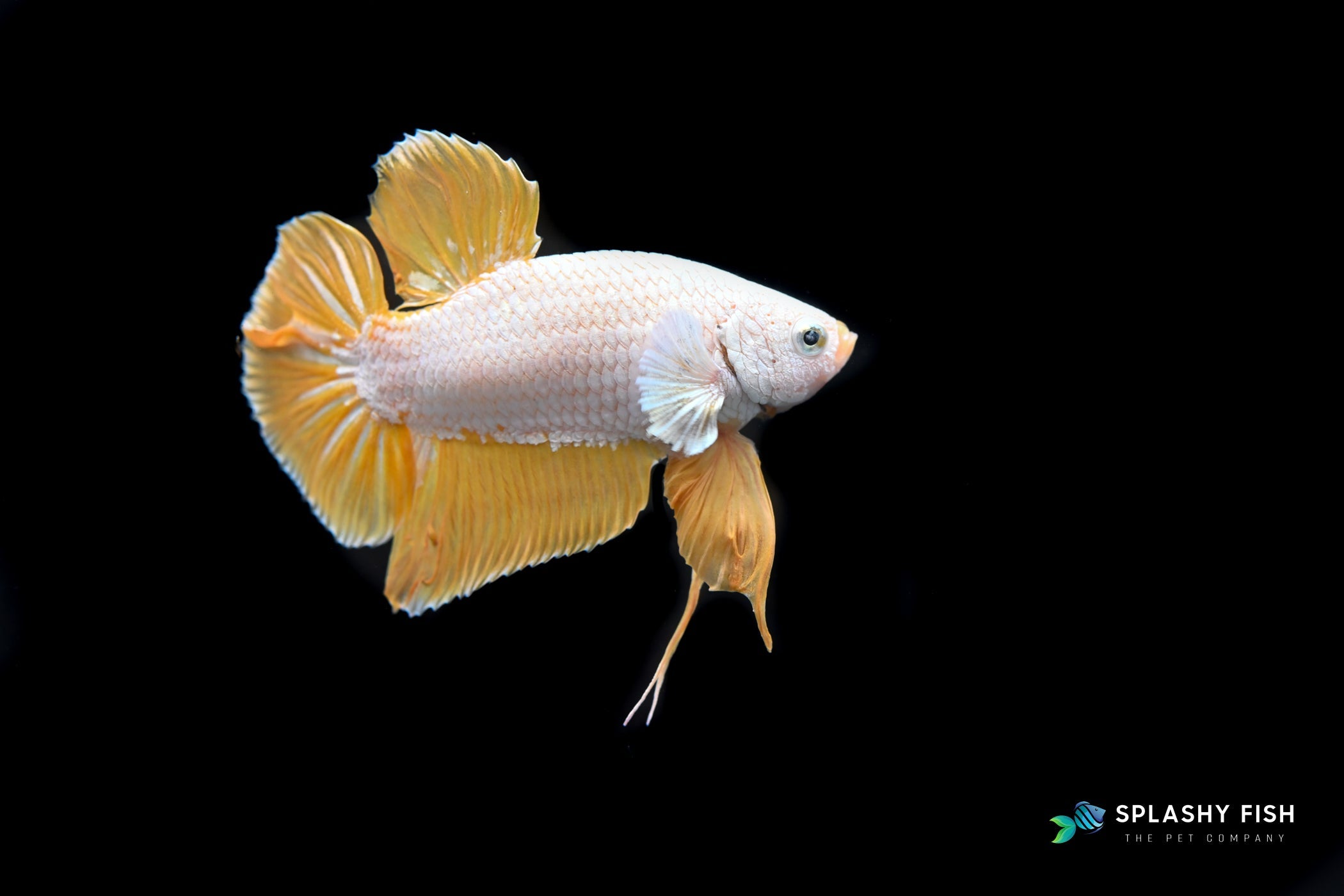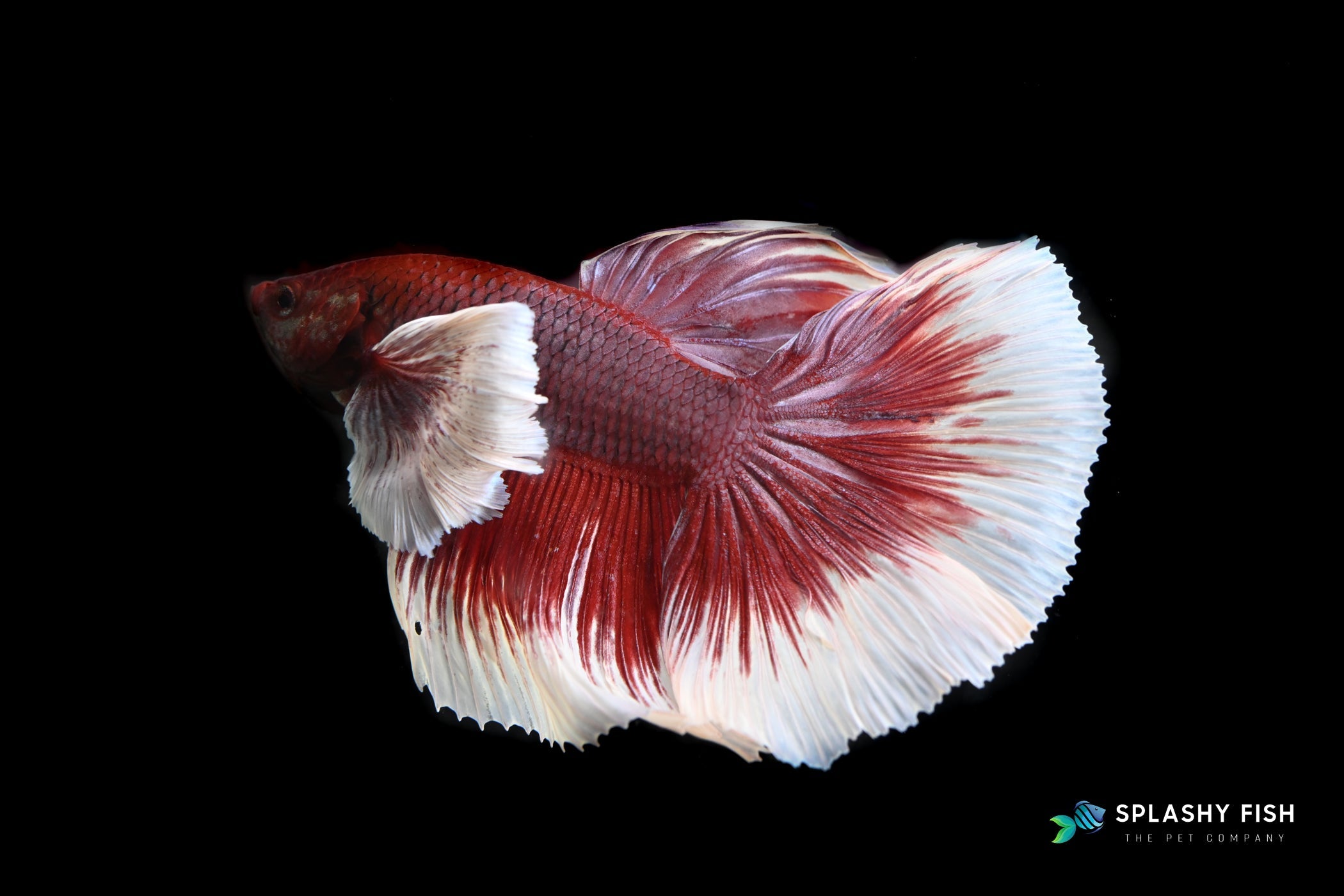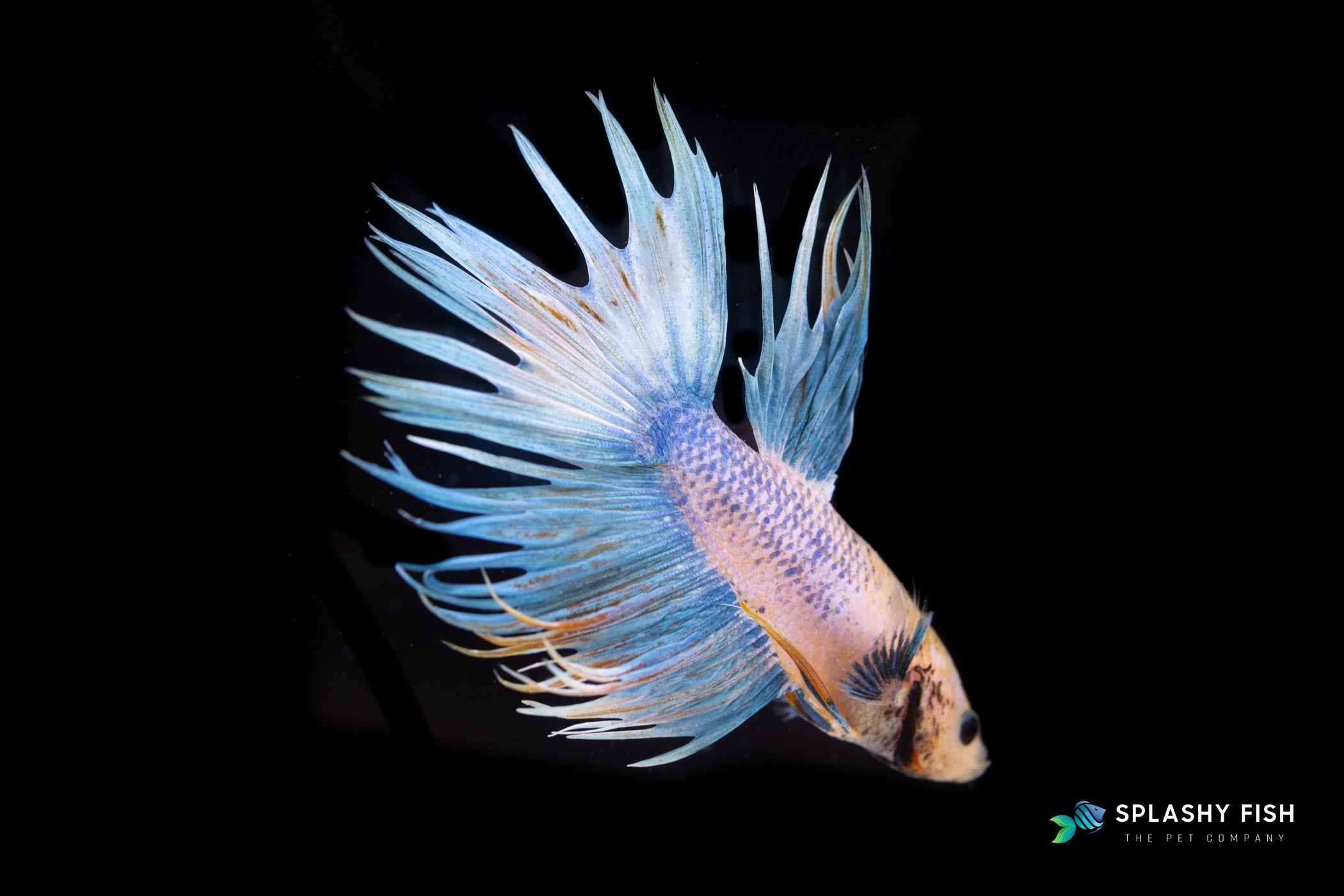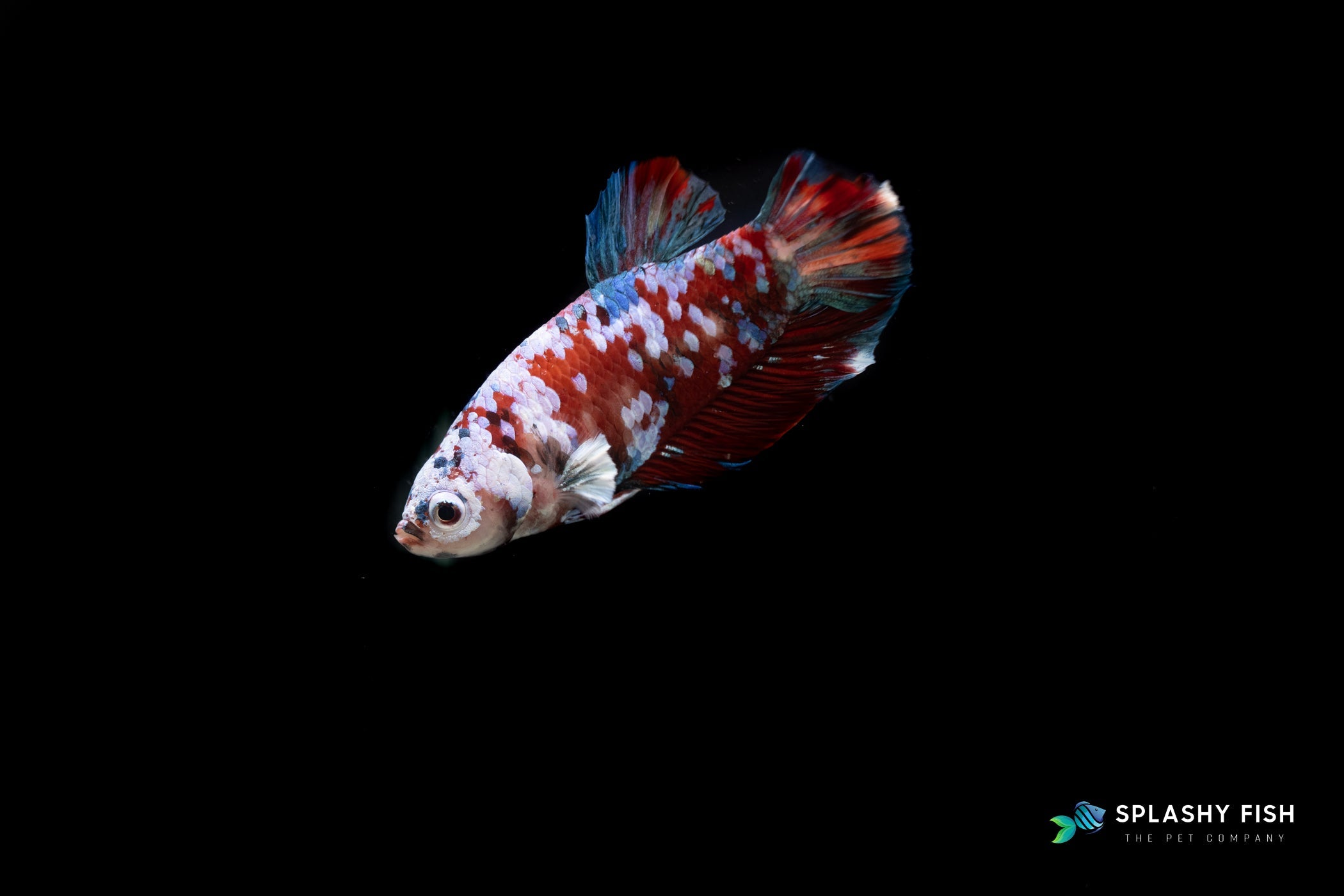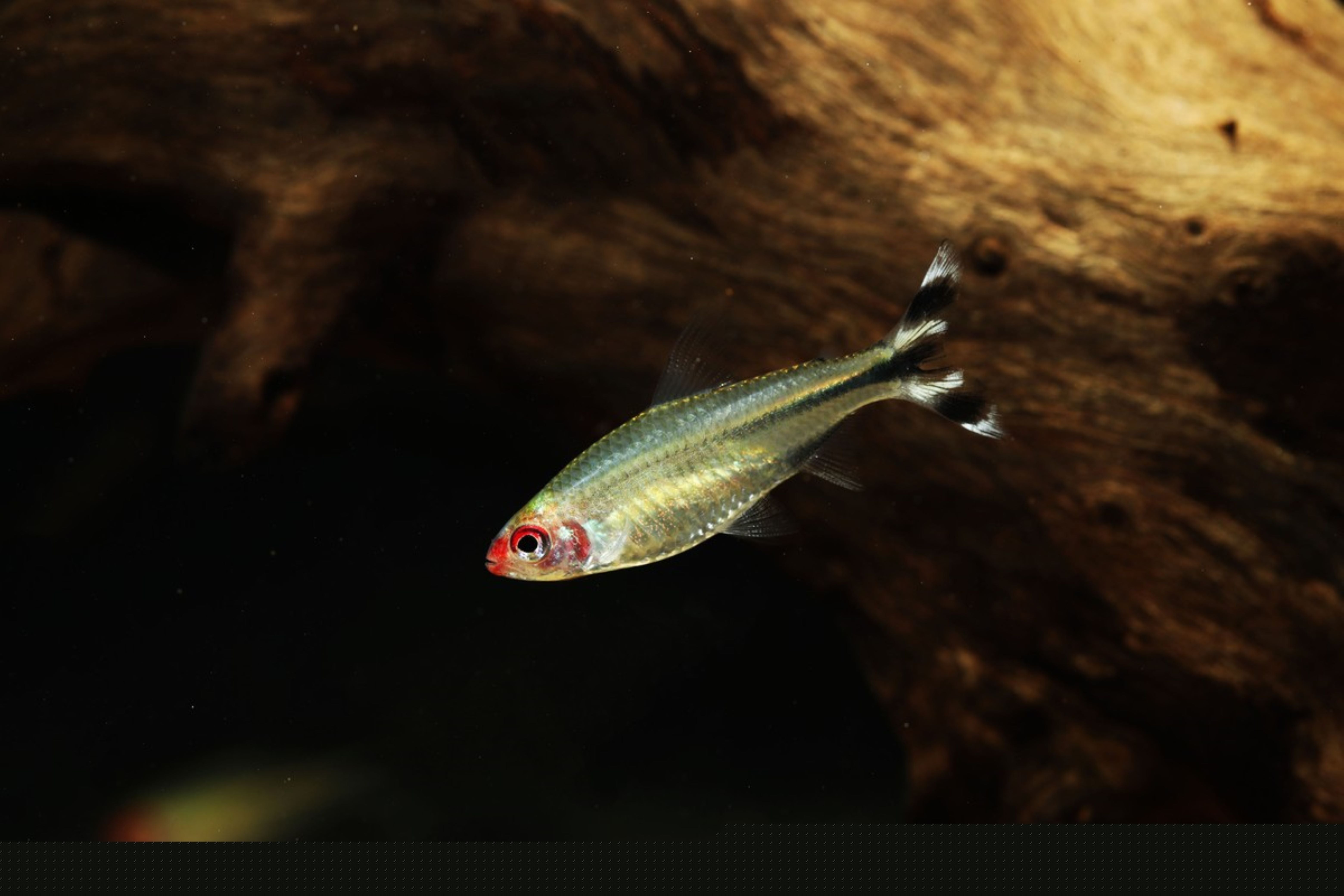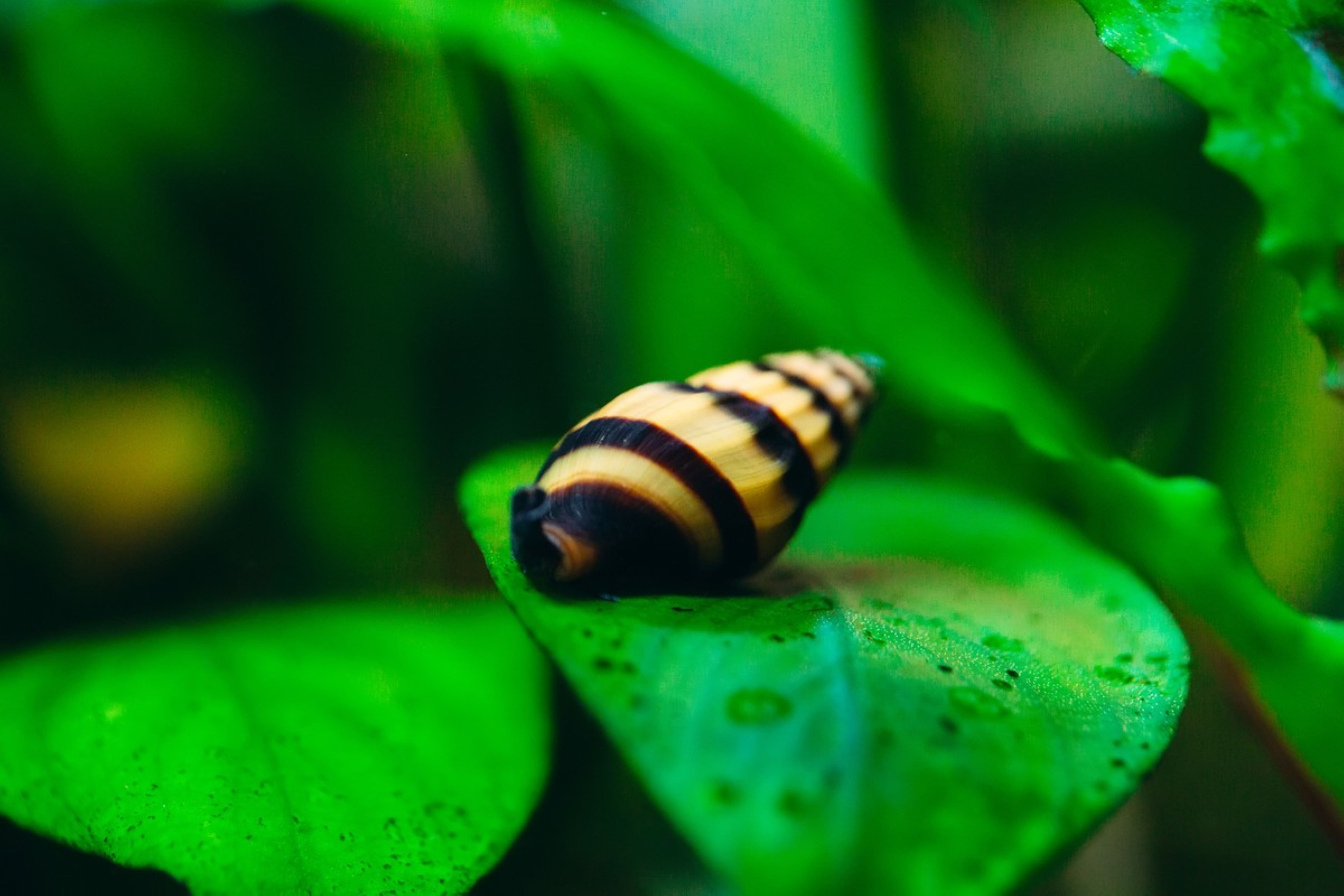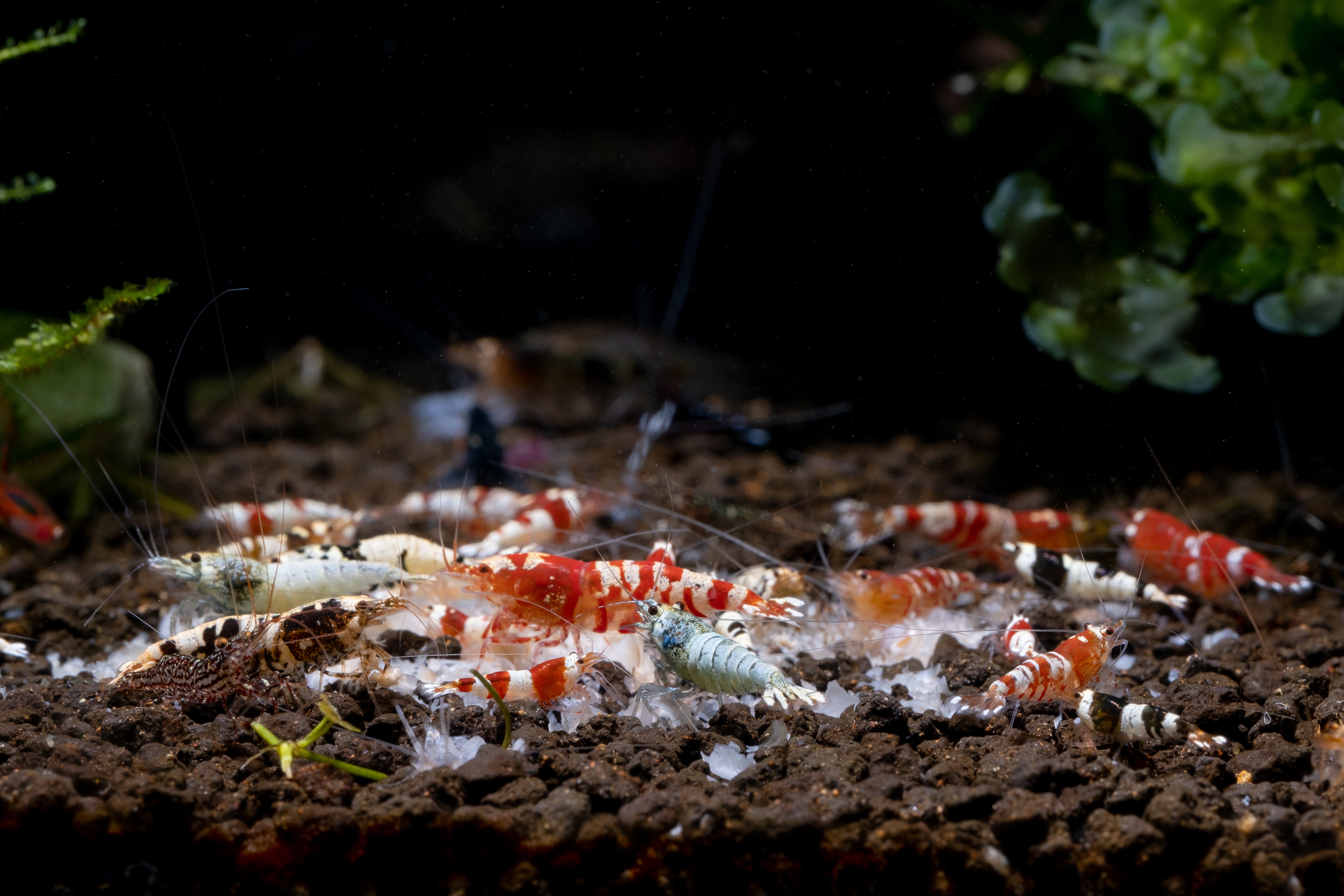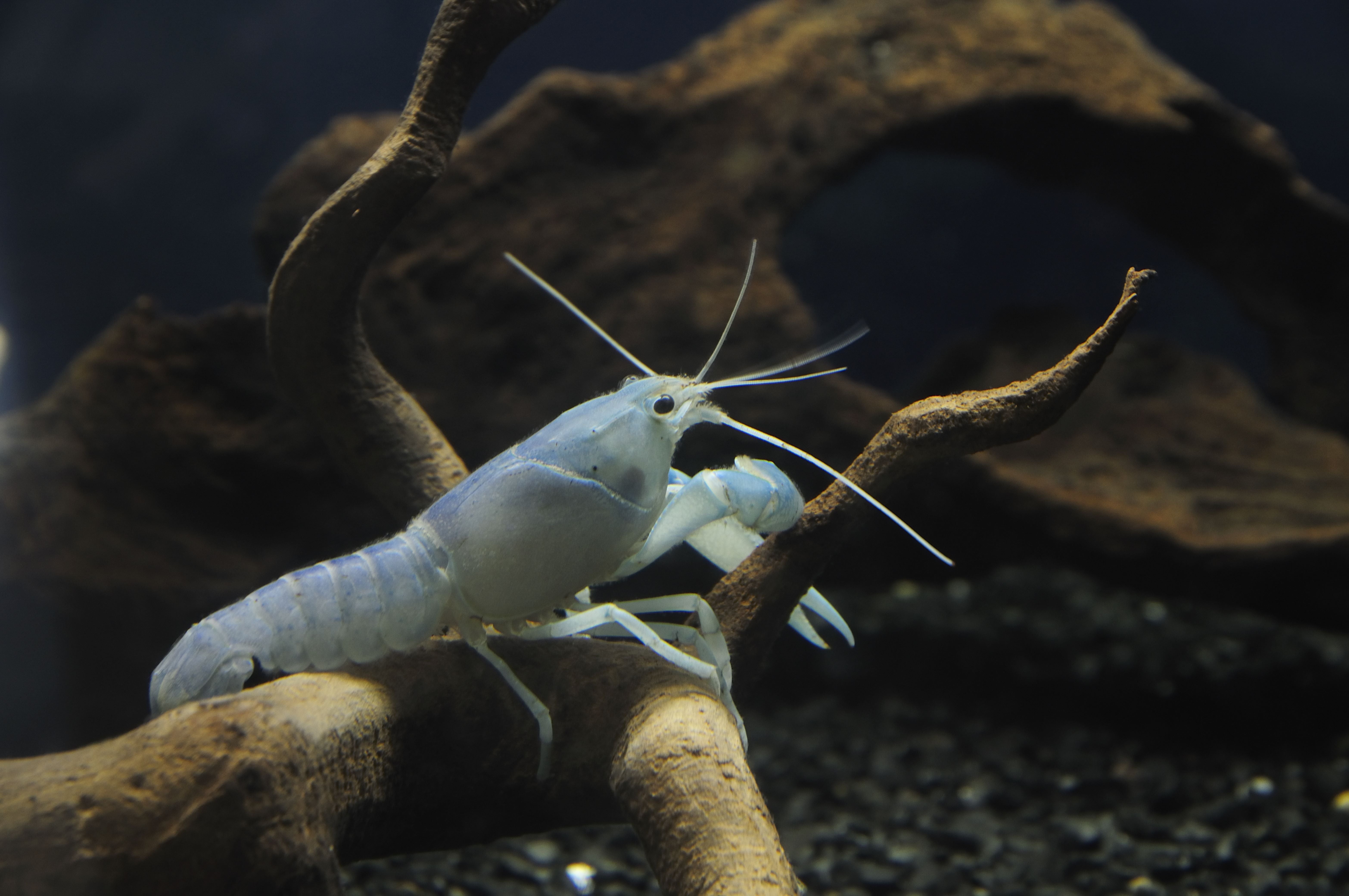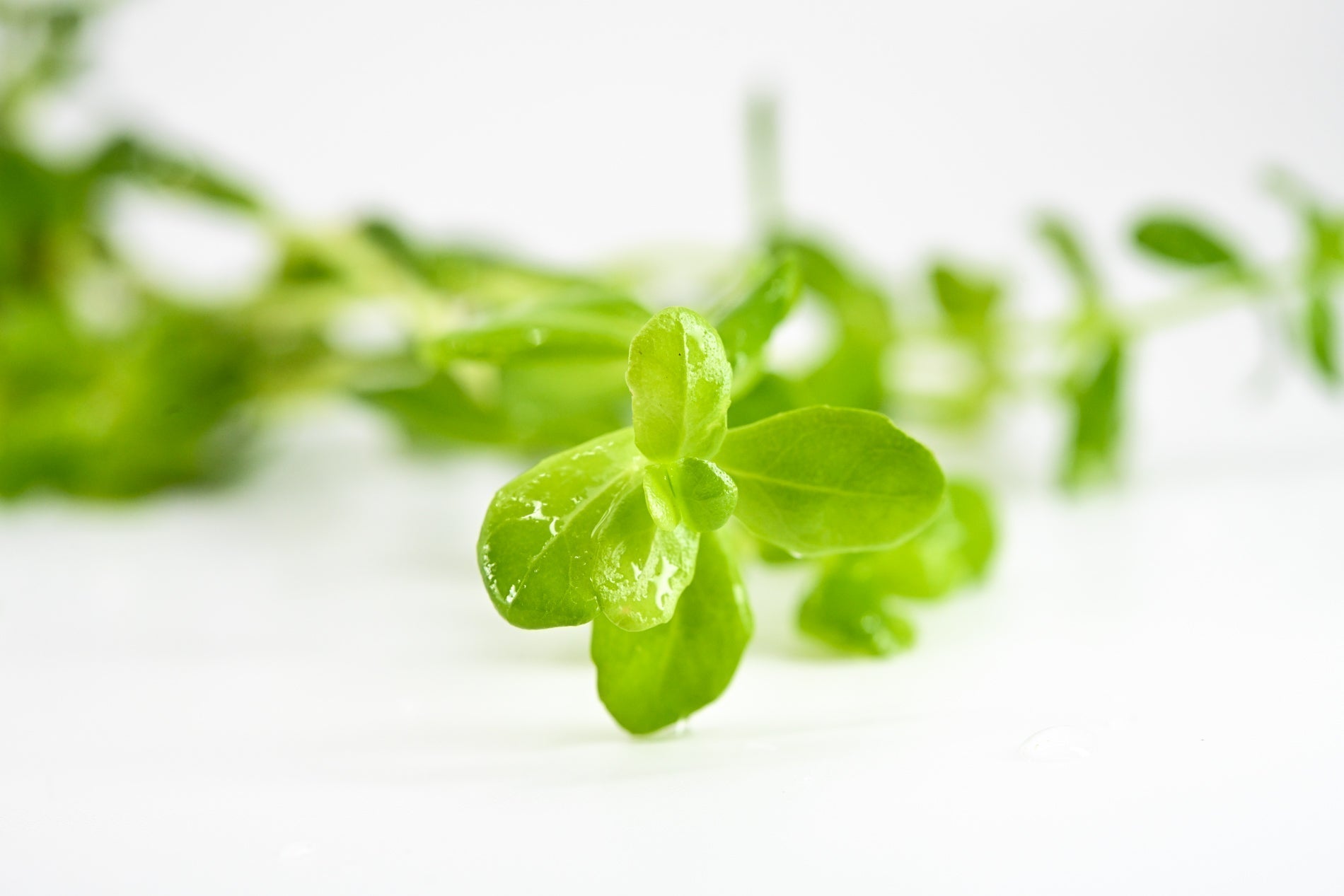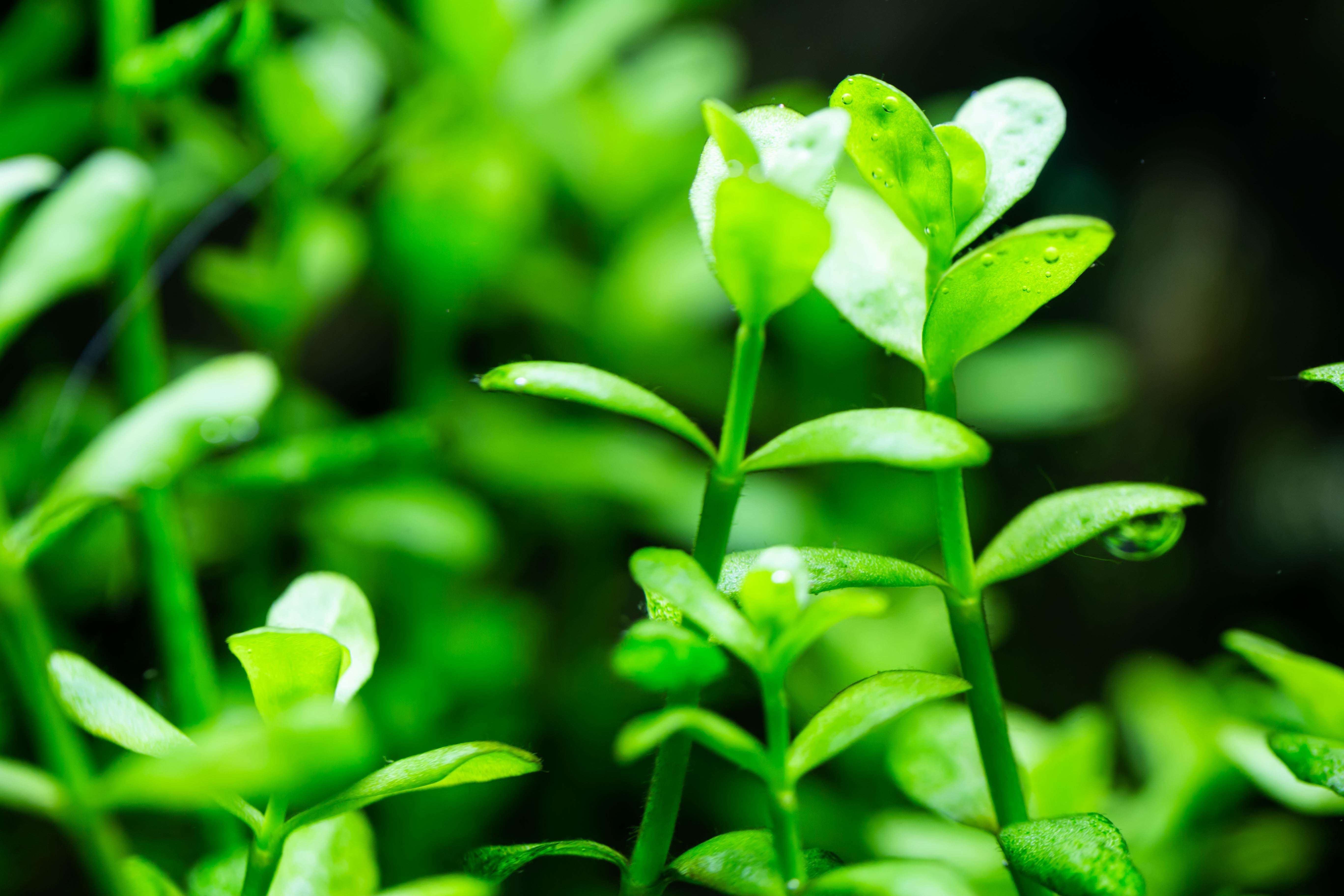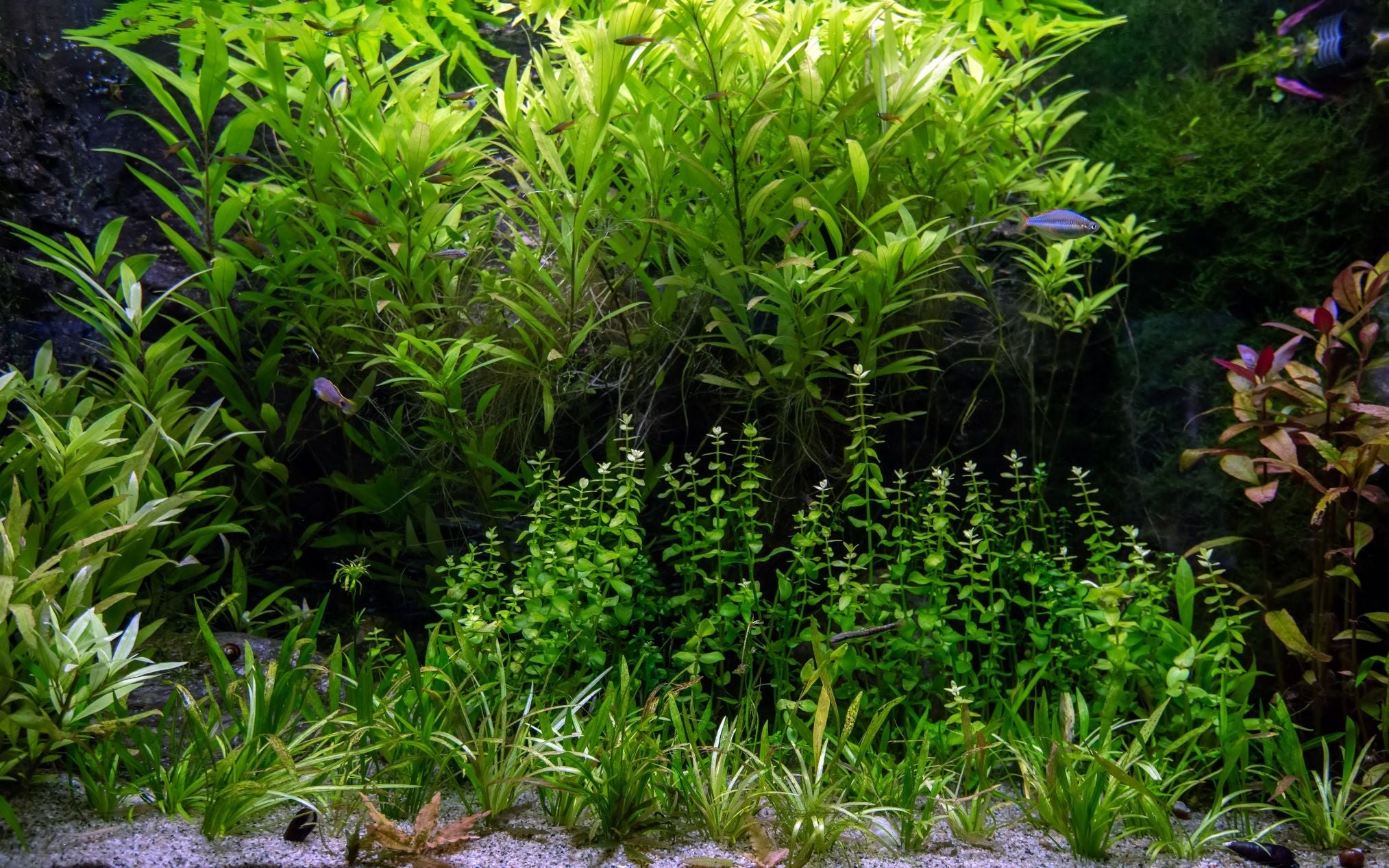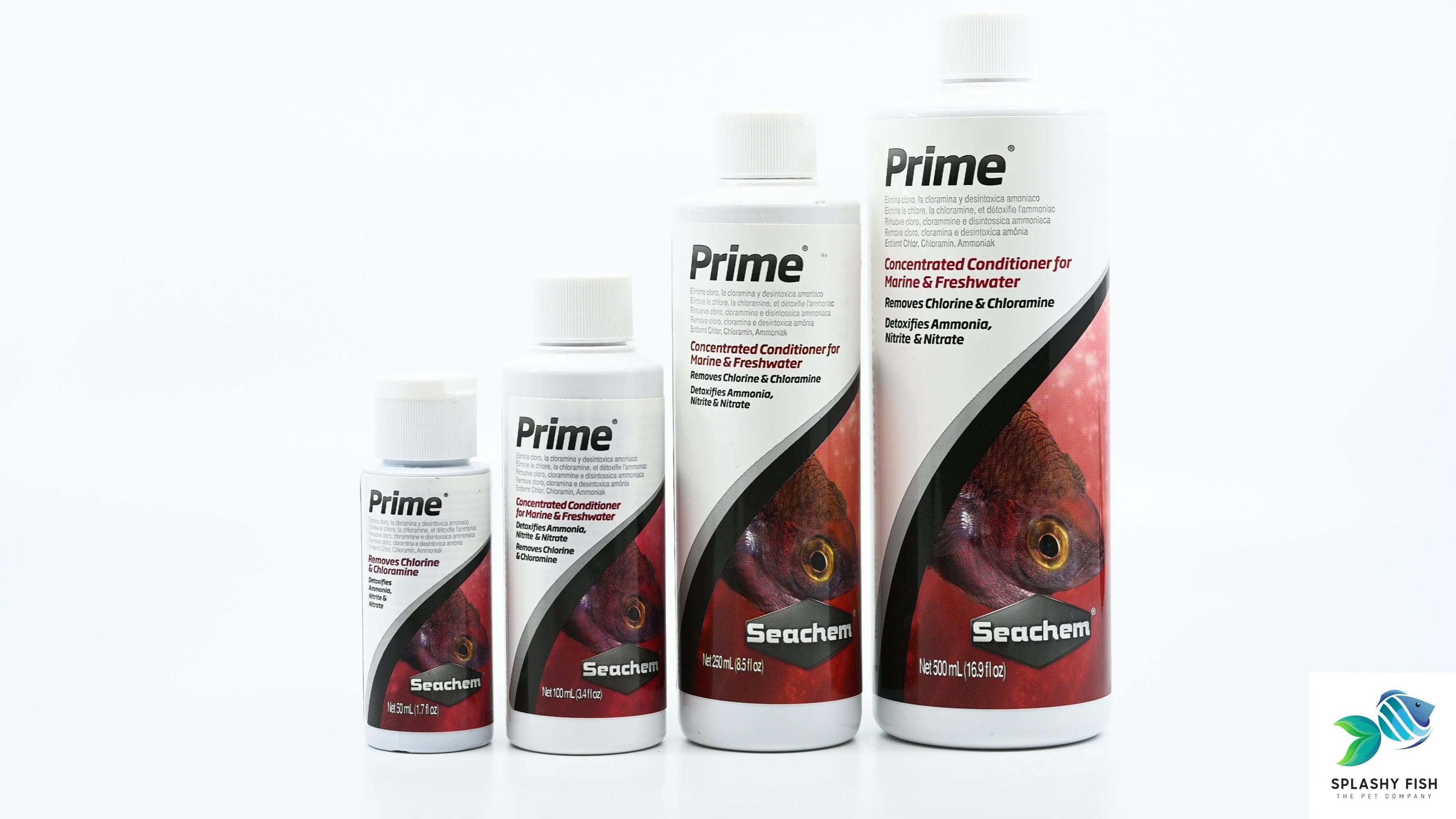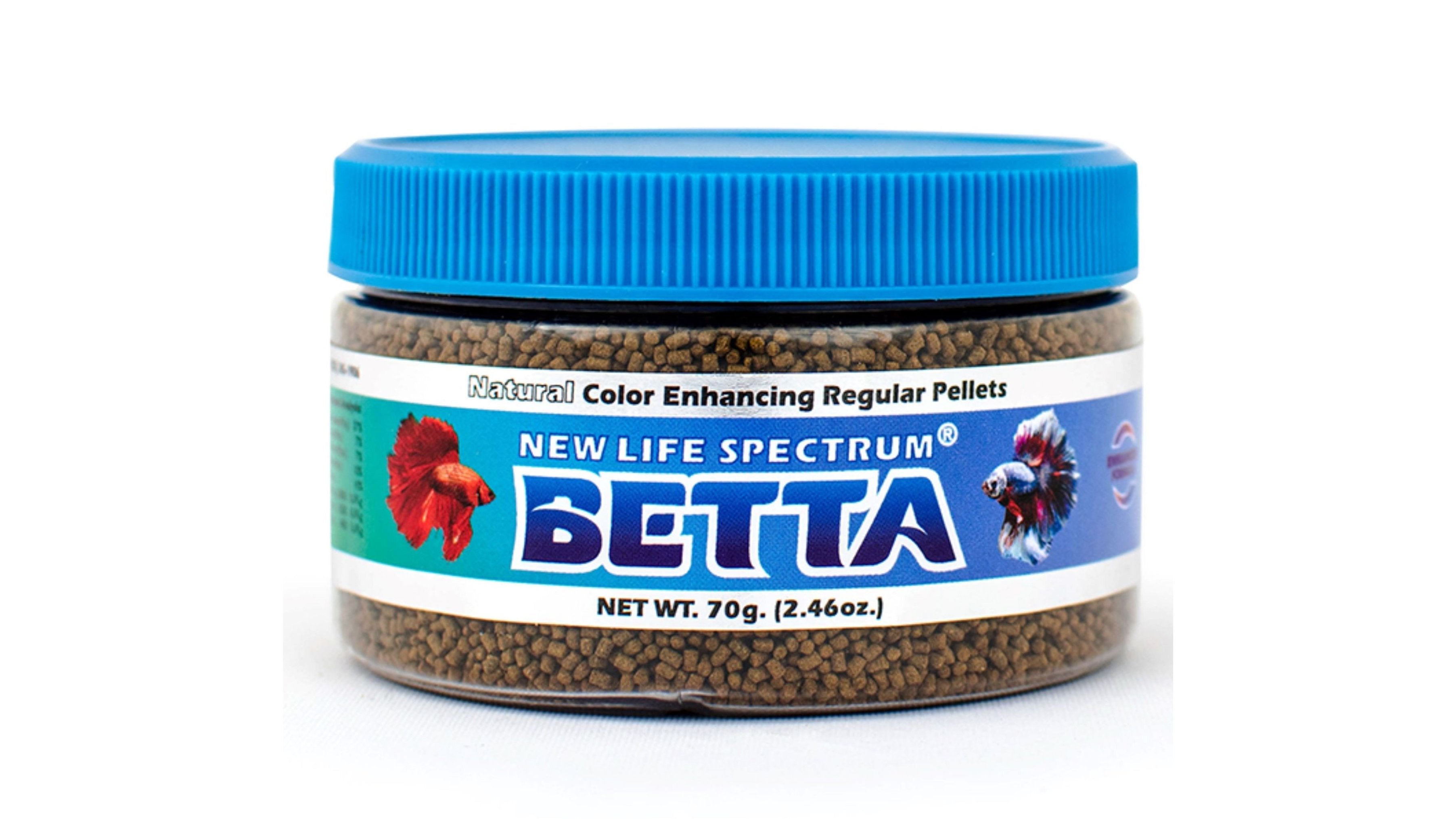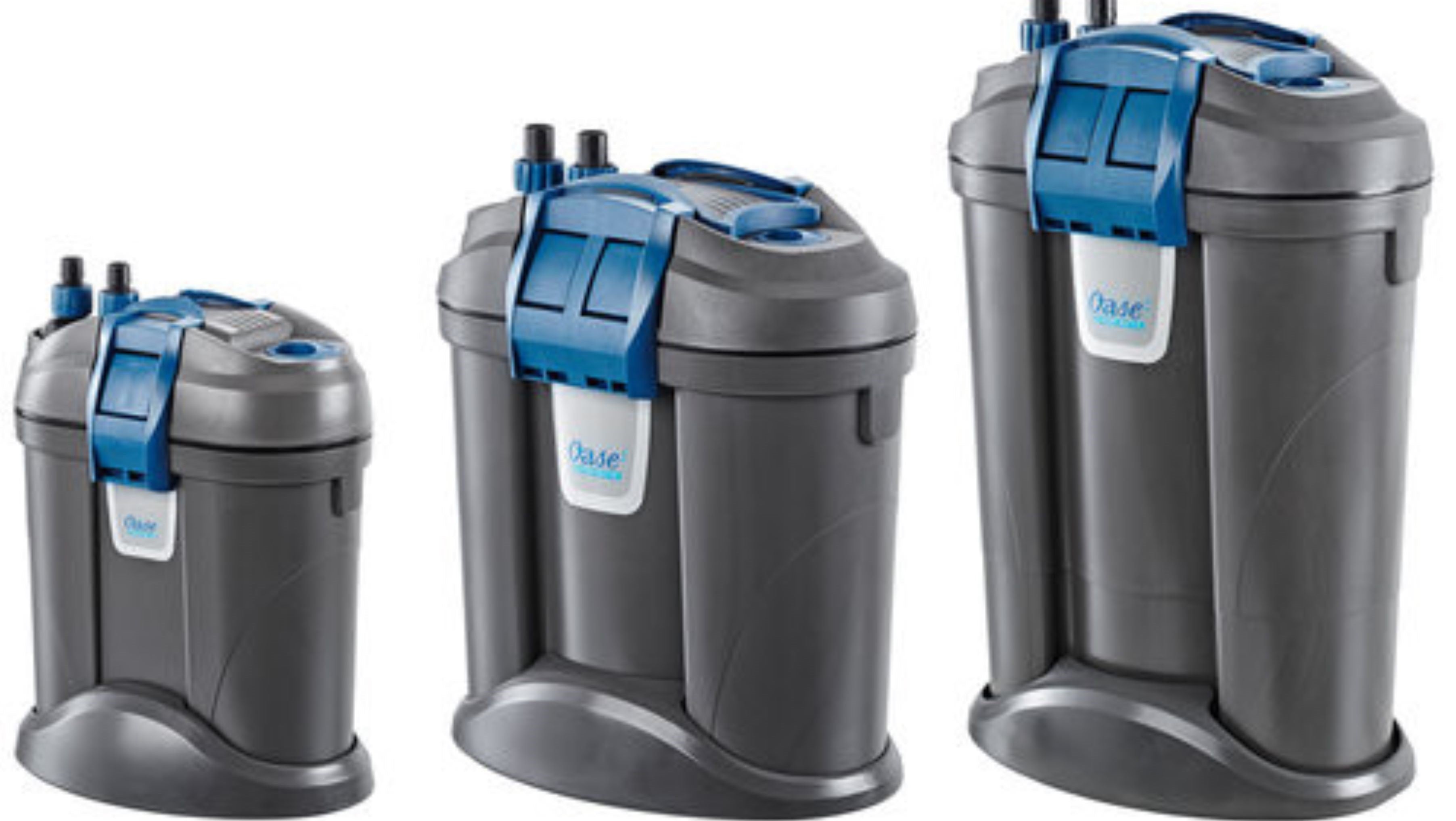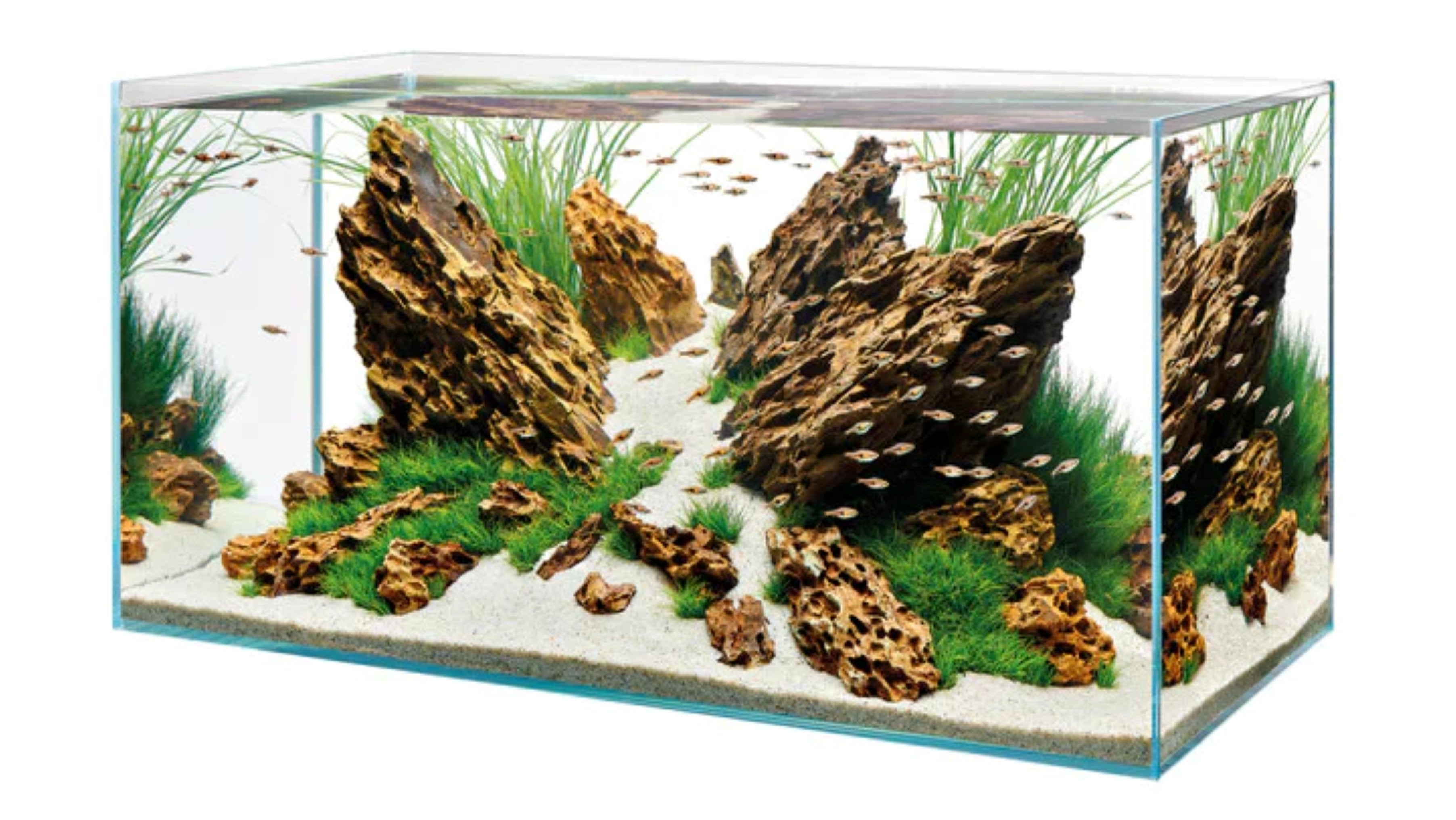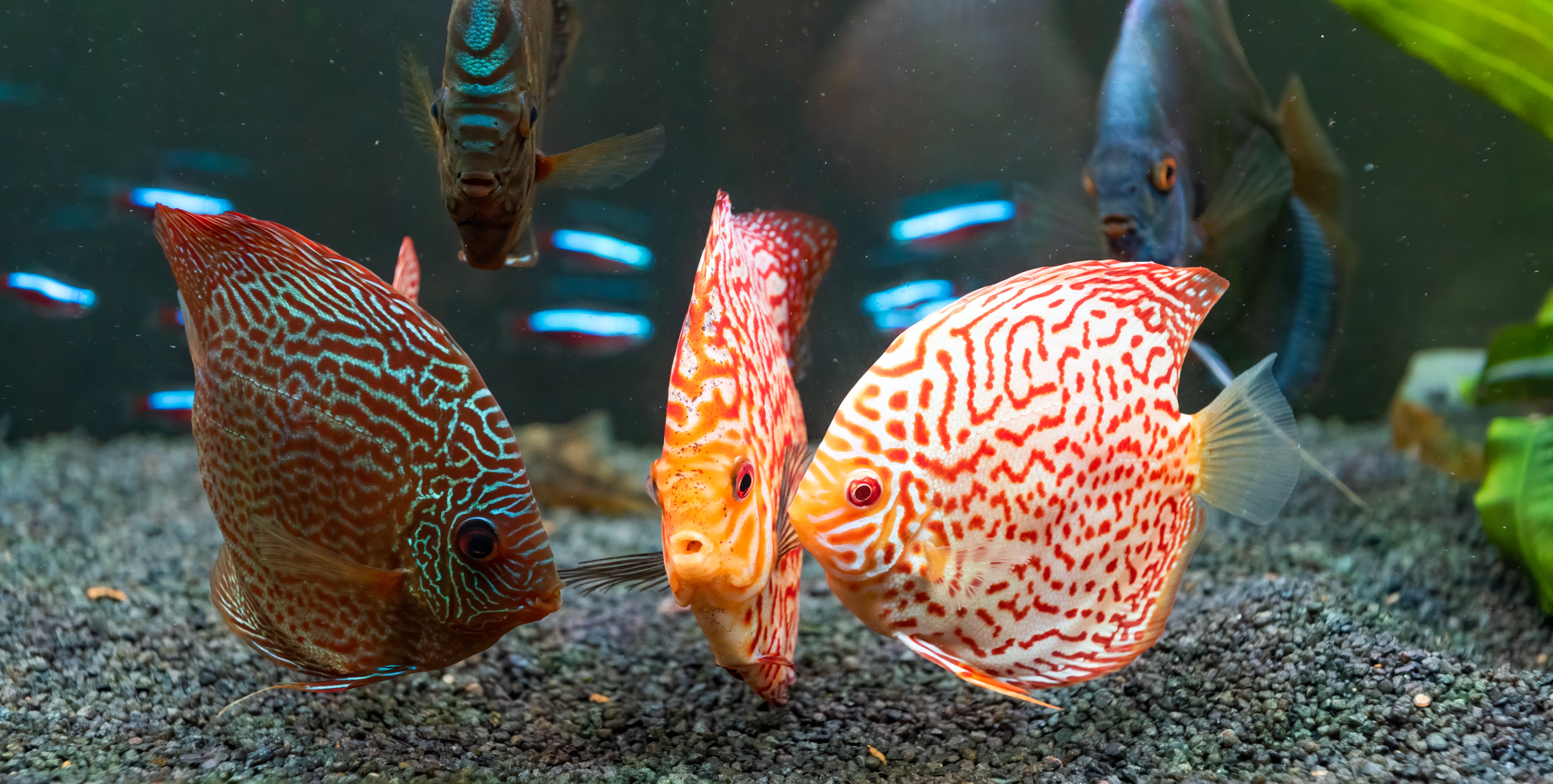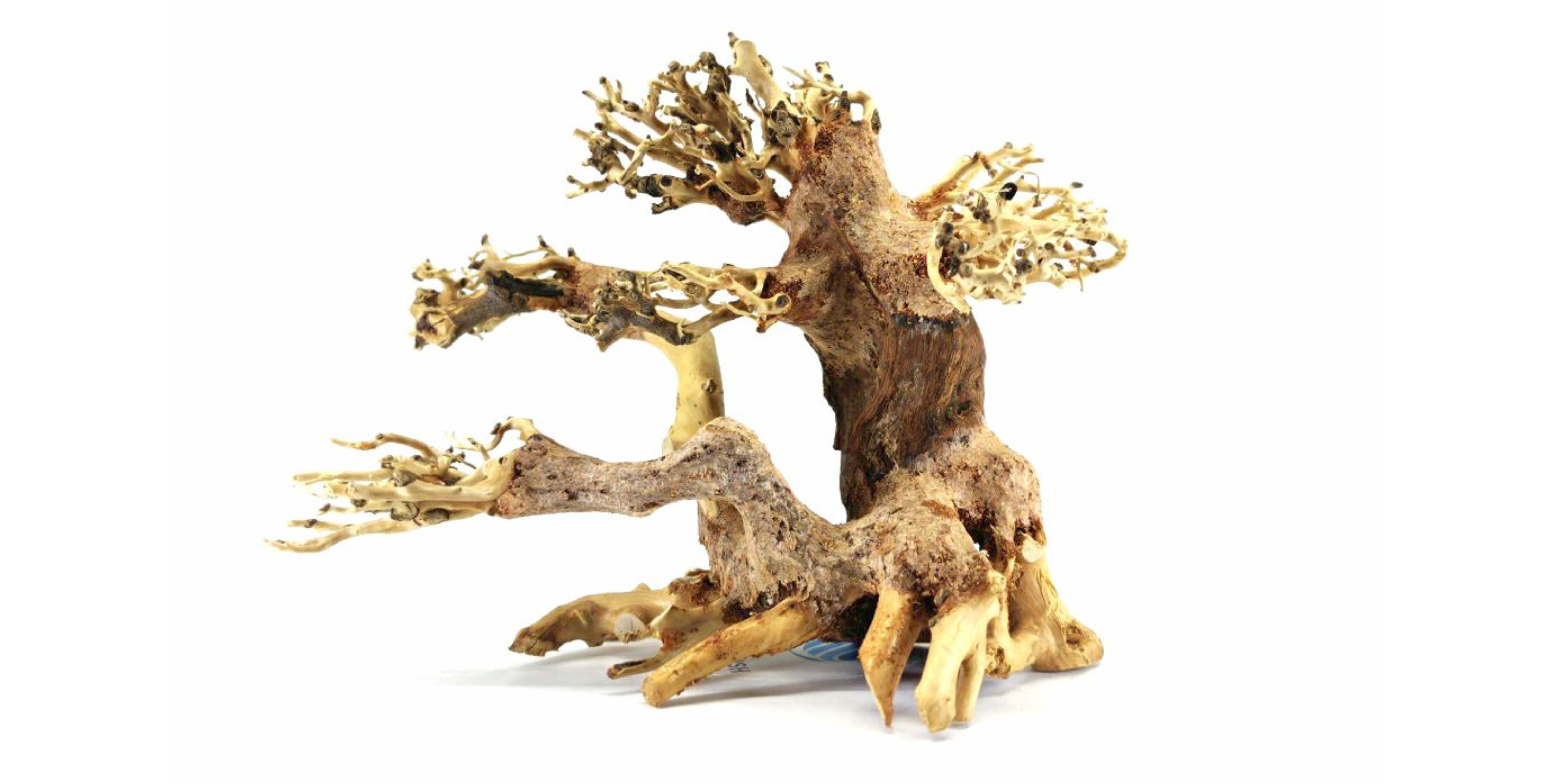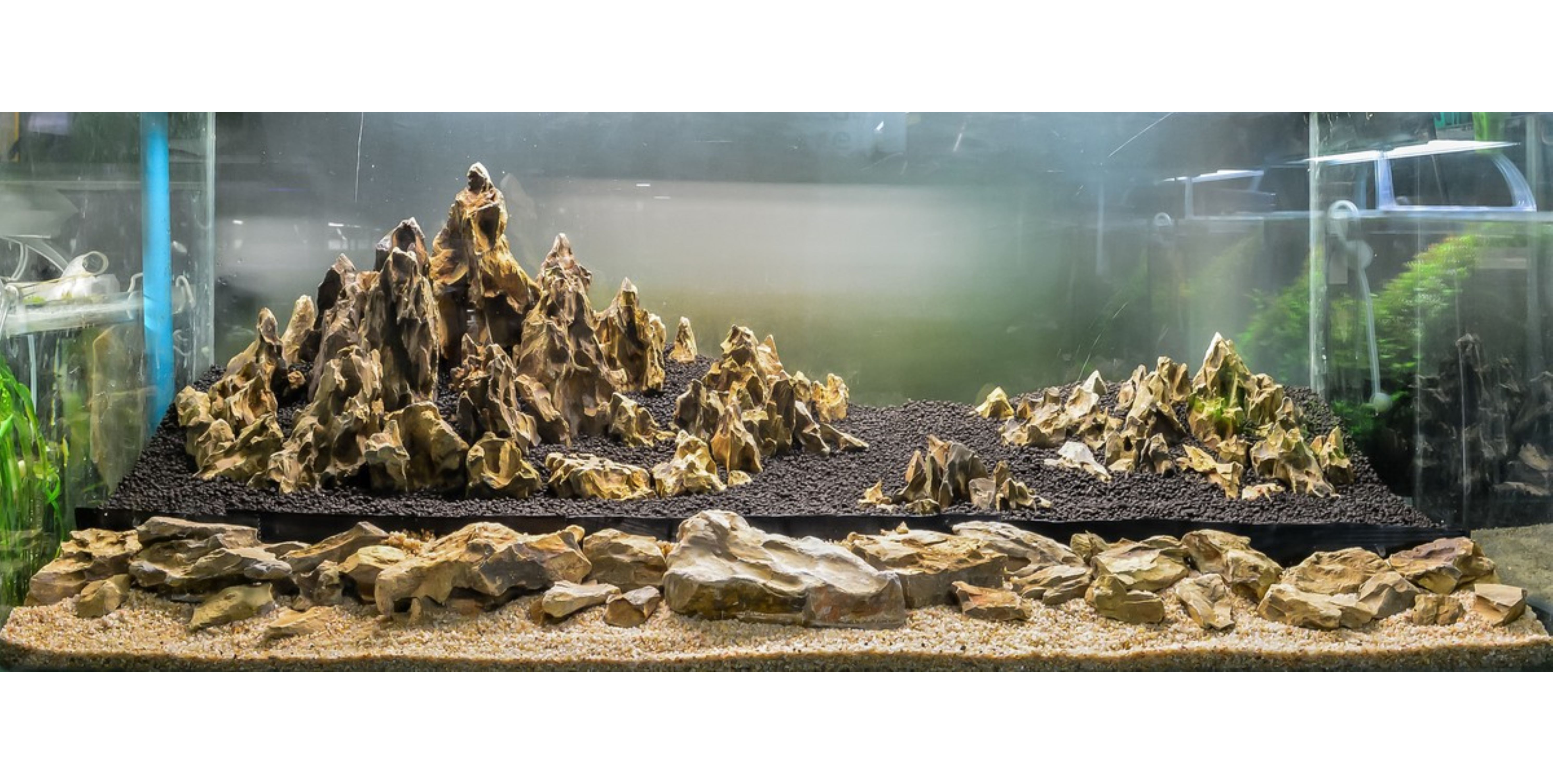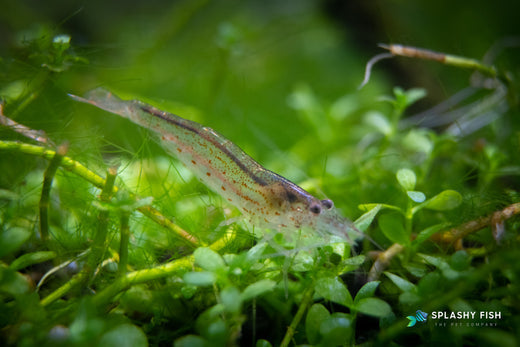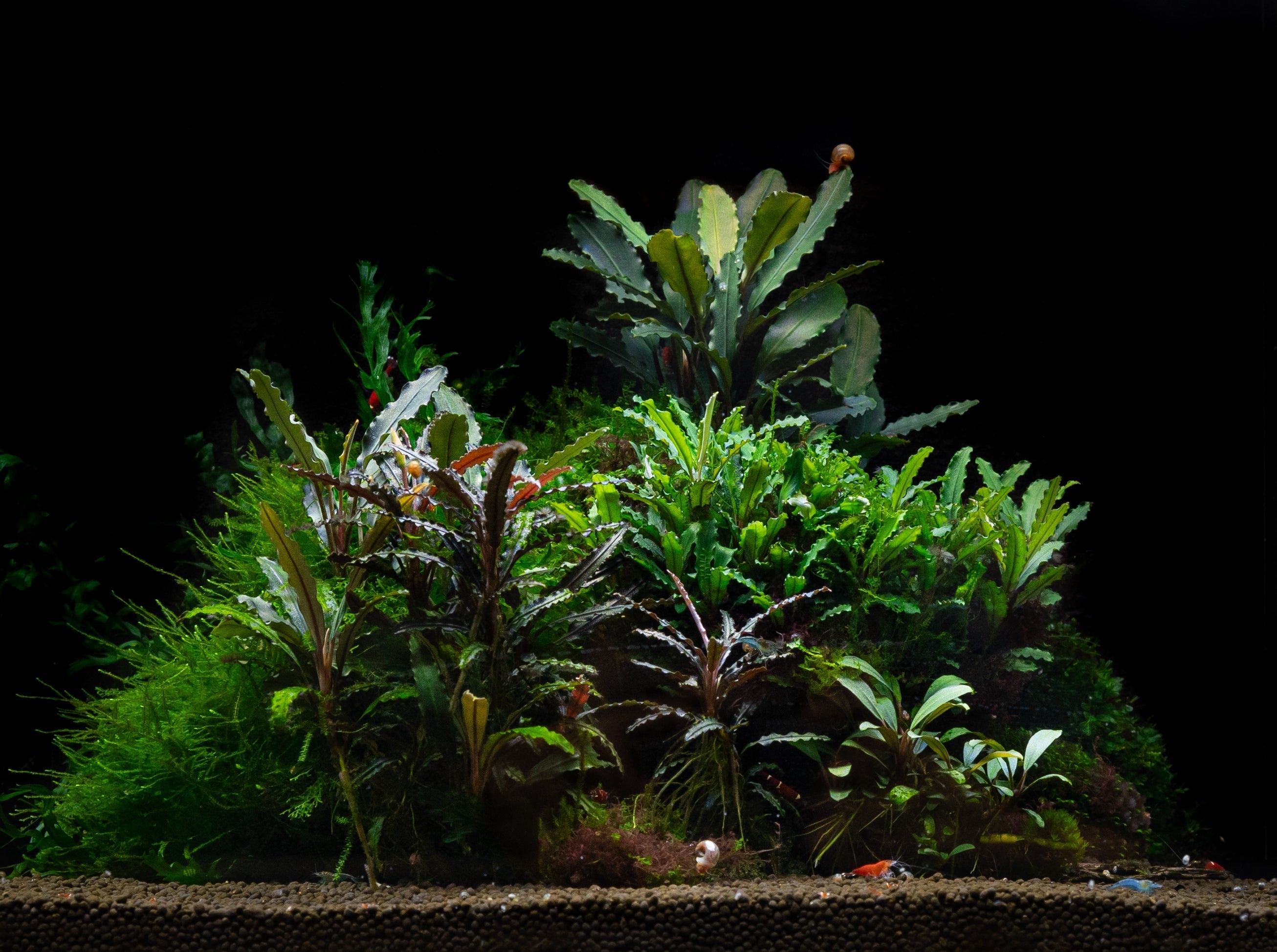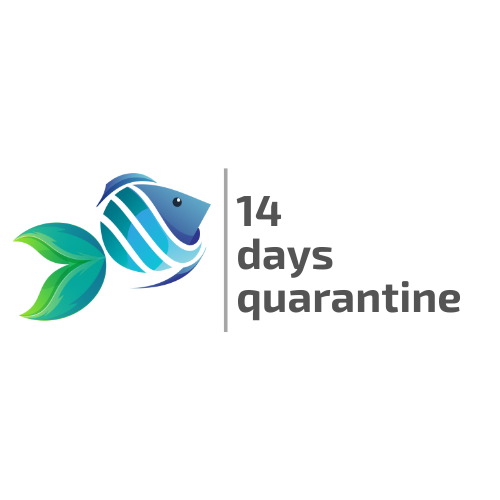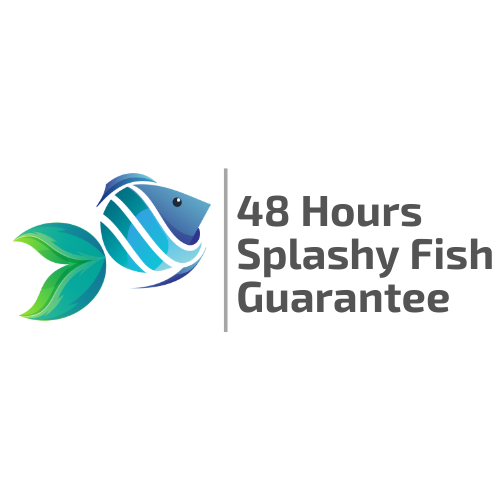Table of Contents
Amano Shrimp is the second most popular aquarium dwarf shrimp after Red Cherry Shrimp. They are also called Algae Eating Shrimp, Swamp Shrimp, Yamato Shrimp, and Japanese Swamp Shrimp. Amano shrimp are good eaters, hardy, peaceful, active, and adaptable. Since they can stay in almost any tank size with different water conditions and require an extremely low maintenance level, no surprise that they are the favourite shrimp of many aquarists, especially those who want to introduce invertebrates to their tank for the first time.
So, what do you need to know before purchasing this interesting species? The answers will be found in this care guide!
What Is Amano Shrimp?
Amano Shrimp were first introduced to the aquarium hobby in the early 1980s by Takashi Amano, a popular aquarist, track cyclist, and photographer who discovered their ability to eat algae and clean the aquarium. Being recognized as the best algae-eating shrimp in the world makes Amano Shrimp the best choice for planted tanks. They also eat decayed plants, outwatches, dead fish, and invertebrates, which makes them an essential part of the cleaning system in any aquarium. This kind of shrimp is native to freshwater rivers and streams in Taiwan, Japan, and Korea. This shrimp’s scientific names are Caridina multidentata and Caridina japonica.
 Image of Amano Shrimp
Image of Amano Shrimp
What Is The Amano Shrimp Size?
Amano shrimp are one of the larger freshwater shrimp for aquariums, with the most considerable size up to 2-3 inches (5-7 cm) in length. It takes about 3-5 months for the shrimp to reach their full size, but it strongly depends on their care condition, as we will go through later. The typical length of Amano Shrimp at the store is about 0.75 to 1 inch, which is a good size to start because they will mature and grow quickly.
Amano Shrimp Appearance
These Caridina shrimp species are easily recognized by the large body, either translucent light grey/brown or green. That color is not as impressive as other brighter-colored dwarf shrimp, but they are still stunning. Their body is highlighted with a long line of solid red-brown or blue-grey colored dots running along their bodies, which is the pattern to distinguish their sex. The colors of these dots are different depending on the shrimp’s diet. If they are given a heavy diet of algae and other plant-based food, these dots will be more green-tinted.
Their tail (Uropod) is wide and translucent as well. These transparent color help them easily blend into the tank and are hard to find! This ability to camouflage themselves into the environment is helpful to protect them against predators, considering them as tasty food.
Amano Shrimp Lifespan
A healthy Amano Shrimp’s average lifespan is between 2- 3 years. They are most likely to die right after being moved to a new tank due to the stress caused by changing water parameters. But these shrimp can live long and healthy if they receive the proper care.
When an Amano Shrimp dies, it will turn to bright orange-red color. If the dead body is left too long, it will turn white. Other shrimp or snails may eat the dead shrimp’s shell to absorb the minerals in the cover. Before this, you should remove the dead shrimp to avoid Ammonia spikes in your aquarium.
Creating The Ideal Amano Shrimp Tank
Acclimate The New Shrimp
To prevent the Amano shrimp from being shocked and endangered in a toxic environment, allowing them to acclimate to the tank parameters is essential. Use the drip method on the Amano Shrimp inside the bowl for 3 hours and monitor for at least 24 hours.
What Is The Best Tank Size for Amano Shrimp?
Tank size should be decided by the number of Amano Shrimp living there. Despite their small size, these shrimp require a large area to live in. Generally, a shrimp needs 2 gallons (7.6L) to have enough space for their activity and interact peacefully with other tank mates, so a 10-gallon (38L) tank will be ideal. With this aquarium size, you could keep a group of 5 shrimp. Keeping only a single Amano Shrimp is not recommended. A group of at least 5 with an even ratio of females and males will be better for reducing any dominant behavior and keeping them safe from larger creatures.
Amano Shrimp are adaptable but do best in stable and well-oxygenated water. Since they are an algae-eating species, they prefer a tank that has algae growth and other tasty scum already than a brand new tank. Your shrimp are less likely to survive in a tank without any algae. Make sure the water flow is calm because sudden fluctuations cause Amano Shrimp stress and weaken their immune system.
Filter
Specific accessories are also needed when setting up your tank to ensure the Amano Shrimp’s health and safety. The recommended aquarium filter type is a sponge filter. This type provides both mechanical and biological filtration for your tank, and it does not cause danger for the shrimp by getting sucked into the filter. The filter also traps bits of edible material that Amano shrimp can come and eat.
Amano Shrimp Water Parameters
Amano Shrimp’s native water is quite cool. They can adapt to a temperature range between 18°C to 28°C (65°F to 80°F), and the ideal is 24°C (76°F). A need for a heater depending on the temperature of the room and the general climate, but as long as the room temperature is higher than 65°F, a heater is not necessary. If the temperature is cooler, Amano Shrimp will eat less and delay their growth.
In contrast, higher temperature boosts the metabolic rate and make the aquarium algae and plants grow faster. It also affects Amano Shrimp’s molting, reducing the water's oxygen level and causing a shorter lifespan.
Generally, Amano Shrimp can thrive in harder water, but the carbonate hardness level should remain around 6.0 to 8.0 dKH. Amano Shrimp would benefit from changing their water twice a week to reduce harmful chemicals. Introducing this shrimp into an aquarium with a well-established nitrogen cycle is crucial. Nitrite, Nitrate, and Ammonia levels should be at 0, as wild-caught Amano Shrimp are very sensitive to these chemicals. And especially, avoid using copper because it’s toxic to your Amano shrimp as well as other invertebrates in your tank.
Maintaining the pH range of 6 - 7.5 (a general neutral level) is recommended. Amano Shrimp can’t deal with high CO2 levels, which tends to decrease pH levels. This species should never be left in an environment with a pH below 6, as they will more likely struggle to survive.
Susbtrates
Amano shrimp don’t have any aquarium substrate requirement, but you can set a layer of gravel or sand and aquarium soil to imitate the environment of their natural habitat in Japan and Taiwan.
Other Decorations
Shrimp will also need some hiding places for safe coverage after molting, so tall aquatic plants, shrimp tubes, or driftwood help them feel secure and comfortable. The tank should have light and dark areas to provide the Amano Shrimp with plenty of places to feed, hide, and play. Consider putting a lid on top of the tank because Amano Shrimp are very active and likely to jump out of the tank when attacked by bigger creatures.
What Do Amano Shrimp Eat?
Amano Shrimp Eating Behavior
Amano Shrimp’s favourite activity is eating. They spend most of their time grazing along the tank's surface or amongst the aquarium substrate and live aquarium plants , looking for the algae and leftover food to eat.
They are generally peaceful and don’t bother anyone. However, this changes when the food comes. The Amano Shrimp has a different and more forceful approach to food than any other kind of shrimp. When food is dropped into the tank, they will sense it and move quickly to grab it or even steal from other shrimp, but the biggest shrimp always takes priority.
What to Feed Amano Shrimp With?
Although Amano Shrimp are famous for feeding on algae, which controls algae issues and contributes to the cleanliness of the aquarium, algae and leftovers are not the only things they eat. Amano Shrimp are primarily omnivores, so they eat both meaty and plant food. The core of their diet should consist of a high-quality pellet or algae wafer.
Fish flakes, shrimp pellets and algae wafers, which provide Amano Shrimp with the protein, can be put into the tank as a whole or split into smaller pieces. In addition, their food includes vegetables to provide calcium, such as zucchini, spinach, cucumber and moss balls. Supplements will be required if there is not enough algae and plant debris in the aquarium. Always remember to blanch the vegetables first and calculate the amount of food you should give them. The typical snacks can be dead fish and molted exoskeletons, or you can also use frozen snacks like bloodworms and brine shrimp. Amano Shrimp do not likely eat Black Beard Algae due to their toughness. It’s important to remove all uneaten food in the tank no later than one hour to avoid ammonia spikes and water contamination, which cause Amano Shrimp's death.
Ensure not to overfeed your shrimp. In an established tank, feeding your shrimp 2-3 times a week is reasonable. If Amano shrimp are hungry, they will get agitated and swim crazy around the tank. When you see this behavior, it’s time to drop some food.
It is important to note that the Amano Shrimp are only good at eating algae if they’re hungry. When there’s plenty of tasty food around, they will choose these foods and refuse to eat the algae. So if you want them to eat more algae, cut down your feeding time.
Always avoid unintentionally adding copper into the tank because it harms your shrimp and other invertebrates. Since many fish foods, medications, and plant fertilizers contain copper, it is crucial to read the ingredients list for any product before adding them to the aquarium to ensure they are copper-free.
How to Sex Amano Shrimp?
It’s pretty easy to distinguish the two genders of the Amano shrimp. First of all, females are slightly bigger than males. The female shrimp also has a saddle on the hind abdomen, where she stores thousands of eggs.
Secondly, you can determine their sex by the speckles or dots on their exoskeleton. In females, the row of dots along their exoskeleton is made up of long, irregular dashes, which look disorderly. While for males, the row of dots is distinctly separated and evenly spaced.
How to Breed Amano Shrimp?
Breeding Amano Shrimp is complicated since most of these shrimp in the market are wild-caught, and this process requires brackish water conditions - a mix of fresh water and sea while the typical type of water in almost all aquariums is freshwater. This process requires a change from brackish water for the larvae's growth at first to freshwater conditions once they mature into adulthood.
Even if the water conditions are correct, it is still highly challenging to successfully breed these shrimp due to the fragility of the larvae and the special care requirements. Because of the limited success of breeding them, this activity is not for all shrimp keepers. So if you want to breed shrimp for the first time, Red Cherry or Ghost Shrimp will be the better choice.
However, let’s go through the breeding process to give you general information about it:
For breeding, you must have at least one male and one female in your Amano Shrimp group. In the wild, after mating, female Amano shrimp will lay between 1,000 and 3,000 eggs, which are glued under her body for up to 5-6 weeks until they hatch into larvae. The female usually waists her tail during this time to ensure the eggs receive enough oxygen. After 6 weeks, the fertilized eggs will hatch, and the newborn larvae need brackish water to live and grow well. As soon as the larvae reach adulthood, move them back to freshwater conditions because the adults can’t stand water with any salt.
Amano Shrimp Tank Mates
It can be a good idea to add Amano Shrimp to a community tank with other creatures, but you have to wait until they grow fully enough to form a group of around 10 shrimp. It’s necessary to make them feel safe in a tank with larger inhabitants.
Choosing suitable tank mates might be tricky since many creatures commonly consider Amano Shrimp as food. It would be best to exercise caution when putting this species into a new community tank.
Best Tank Mates for Amano Shrimp
Their best tank mates should be small to medium-sized, peaceful and non-aggressive inhabitants. Since Amano shrimp are gentle, they will not threaten the small creatures in their tank. Some good choices include:
- Freshwater shrimp: Red Cherry Shrimp, Bamboo Shrimp, Vampire Shrimp, Ghost Shrimp
- Freshwater Snails: Golden Inca snails, Malaysian Trumpet snails, Assassin snails, Ramshorn snails, Mystery snails, Japanese Trapdoor snails, etc.
- Octocinclus Catfish
- Cory Catfish
- Neon Tetras
- Ornamental fish
- Asian Stone Catfish
- Bushynose Plecos
- Danios
- Guppies
- Hillstream Loaches
Ensure the tank is large enough to accommodate all species with space requirements.
Tank Mates to Avoid
Make sure to keep Amano Shrimp away from aggressive and large predatory species because they are likely to eat Amanos, including:
- Aquarium Crayfish
- Freshwater lobsters (Tangarine Lobster, Hammer Cobalt Blue Lobsters)
- Cichlids
- Oscars
- Arowanas
- Large Plecos
- Bettas
- Catfish
- Goldfish.
Live Plants for Amano Shrimp
Amano Shrimp are an excellent species for beginners because of their low demand for care. These shrimp do well in a group. They love exploring hiding places and feel comfortable going out to find food. Having aquarium live plants in the tank is a good idea to provide these shrimp with natural food.
A heavily planted tank is ideal for this species. Amano Shrimp love to graze along the plants for algae and old leaves. Live plants also help to maintain the water quality that shrimp need to survive. Java Moss, Christmas Moss, Java Fern, Anubias, and Green Cabomba are the most suitable aquatic plants for them.
Do Amano Shrimp Molt?
Molting is a natural process of any shrimp, which occurs when the old shell can’t keep pace with the size of the body, so they need a new and larger one to continue developing. Amano Shrimp molting happens monthly, or about 5-6 weeks. Identifying which shrimp is molting is challenging because they usually go in a group.
Sometimes, shrimp keepers may mistake molting for dead shrimp, but dead Amano Shrimp change their color to white due to the carotenoids present in their bodies, while molting Amano Shrimp is very translucent with a piece of shell pulled apart.
As molting occurs, the old cover loosens and almost detaches from the shrimp's body. Shrimp will bend their tails to create a force that causes the shell to crack in half. After the front half of the body is carefully pulled out of the old cover, the shrimp flick their body to pull the rest out of the shell, and the molting is completed.
Most shrimp feel fragile and highly vulnerable right after moulting, so they need small caves and private areas to hide until their new shell becomes hardened. It usually takes several days for that. Amano Shrimp may also eat the old cover to absorb the minerals there.
If the water parameters and calcium amount in the diet are incorrect, Amano Shrimp can have molting issues, which may lead to death. Therefore, providing enough calcium in the water and as part of the shrimp’s diet is crucial.
Conclusion
Amano Shrimp are hardy, active, and widely recognized as one of the best algae-eating shrimp in the aquarium hobby. Their adaptability, peaceful temperament, and helpful cleaning behavior make them a top choice for both planted tanks and community aquariums. While they may not boast the bright colors of other shrimp species, their unmatched utility and fascinating personalities make them a favorite among aquarists. With the right tank conditions, proper diet, and compatible tank mates, Amano Shrimp can live long, healthy lives while keeping your aquarium clean and balanced. What a fascinating creature, isn't it? Hopefully, you have had helpful information and are well-prepared to start getting acquainted with these Amano Shrimp.
At Splashy Fish tropical fish store, our Amano shrimp for sale and other freshwater shrimp for sale are quarantined for 14 days before shipping to ensure the best quality for customers. Visit our website to buy them online or at our aquarium store in Virginia for more freshwater fish for sale, betta fish for sale, freshwater invertebrates for sale, aquarium plants for sale, and aquarium supplies.
Amano Shrimp Care Frequently Asked Questions (FAQs)
Are Amano shrimp the same as Ghost shrimp?
No, Amano Shrimp and Ghost Shrimp are different species. Amano Shrimp (Caridina multidentata) are larger, reaching up to 2–3 inches, and are famous for their algae-eating ability. Ghost Shrimp (Palaemonetes paludosus) are usually smaller, more transparent, and often sold as feeder shrimp. While both are hardy and inexpensive, Amano Shrimp are better suited for planted aquariums because of their efficiency in algae control and tank cleaning.
What are Amano shrimp good for?
Amano Shrimp are best known as algae eaters and tank cleaners. They graze on soft algae, decaying plant matter, leftover fish food, and even dead organisms, helping maintain water quality. Their constant foraging makes them valuable members of a clean-up crew in planted aquariums. While they may not always consume tougher algae like black beard algae, they still play a vital role in reducing overall algae growth and keeping tanks balanced.
Are Amano shrimp good for beginners?
Yes, Amano Shrimp are one of the best freshwater shrimp for beginners. They are hardy, adaptable to a wide range of water conditions, and peaceful with other community tank mates. Their low-maintenance care requirements, combined with their algae-eating behavior, make them ideal for aquarists who want to try invertebrates for the first time. Beginners should still ensure stable water parameters and avoid copper-based products, but overall, Amano Shrimp are an easy and rewarding choice.


